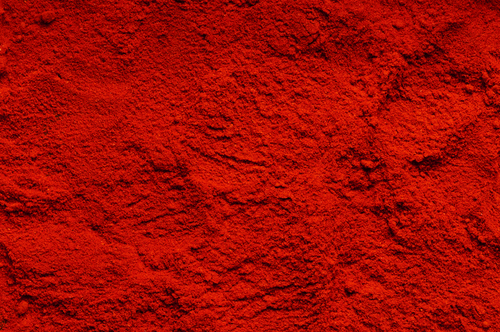Is Red 40 Bad For You?
Also Known As: Allura Red AC, FD&C Red 40
Short answer
FD&C Red 40 is bad for you. It is linked to many health complaints that have erupted over the last half century.
Category 'F' is for things that fail to bring anything beneficial to the table, and are very harmful to your health. We recommend completely avoiding anything in this category. Long-term side effects of 'F' items are usually very serious.
View Full Grading System
Category 'A'
Very healthy and numerous health benefits. Side effects are rare. Things rated an 'A+' are typically necessary for survival (for example, water).
Very healthy and numerous health benefits. A few harmful qualities may be associated, but only under certain circumstances such as an allergic reaction.
Very healthy and numerous health benefits. Harmful qualities may be associated, but aren't usually serious.
It is important to note that even the best things in life can become bad in immoderate amounts. So, although something may be rated an 'A+', overconsumption/overdoing can bring unwanted effects.
Category 'B'
Very beneficial to your health. Things rated a 'B+' may have a few harmful qualities to pay attention to.
Overall beneficial to your health. Things rated a 'B' may have some harmful qualities to pay attention to.
More beneficial to your health than not. However, harmful qualities are most likely associated and shouldn't be overlooked.
The main difference between category 'A' and category 'B' is the harmful qualities typically present in 'B' items. Serious side effects are usually uncommon, but are still possible and should be taken note of.
Category 'C'
Both beneficial and harmful qualities associated. Things rated a 'C+' are typically a bit more on the beneficial side. Still, moderation is important.
A fairly even ratio of beneficial and harmful qualities. Moderation is important. Very general topics that can lean towards both sides of the spectrum will be placed here as well. Rice, for example, can be good or bad depending on the type.
More harmful than beneficial. Side effects are common, especially when consumed/done excessively. Moderation is very important.
Category 'C' usually denotes to both good and bad qualities. When it comes to this category, it is important to keep this word in mind: moderation.
Category 'D'
Harmful to your health. Although benefits may be associated, the bad most likely outweighs the good. Moderation is very important.
Harmful to your health. A few benefits may be associated, but the bad outweighs the good. Moderation is extremely important.
Harmful to your health. Very few, if any, benefits are present. Things in this category should be avoided as much as possible.
Category 'D' is typically for things that are more harmful than beneficial. While consuming/doing something unhealthy once in a blue moon shouldn't hurt, we definitely recommend eliminating 'D' items as a regular part of your routine/diet.
Category 'F'
Category 'F' is for things that fail to bring anything beneficial to the table, and are very harmful to your health. We recommend completely avoiding anything in this category. Long-term side effects of 'F' items are usually very serious.
Category 'N'
'N' stands for neutral. Things placed into this category are generally (a) neither good nor bad for you, or (b) lack the necessary evidence to reach any conclusions.
Long answer
FD&C Red 40 is made from petroleum, which is FDA approved mind you. However, the use of this dye has increased 500% over the last 50 years. Since then, we have seen a huge increase in aggressions, A.D.D., A.D.H.D immune disorders and allergic reactions. Studies are showing the increase is linked to the amount of FD&C Red 40 being ingested daily. Red 40 is found in cosmetics, meats, and processed foods. The color is added to meats to achieve a nice bright "healthy" looking red product that is appealing to the customer. Without this red dye, meat would not appear to be bright red. Keep that in mind next time you buy meat.
The problem is the dye is such a small molecule that the body doesn't really detect it. These molecules attach themselves to food and protein molecules, which makes them directly digestible into the blood stream. The dye should actually be filtered out by one of the body's filter systems but it's not due to size.
Short-term side effects can be allergic reactions and skin rashes. Anytime you ingest something you are allergic to you risk allergic reactions. The issue here is normally, physicians will ask what you ate. Often time, no one looks at the dyes involved unless you go to an allergist. Since the dye is used in cosmetics, it gets absorbed into the skin. This can cause skin reactions such as rashes, blisters, redness, sensitivity and more. Aggression seems to also be reported by people reacting to this dye. The good news is once the dye is gone from the system, so is the aggressive behavior.
The longer term side effects include immune disorders, A.D.D. and A.D.H.D. Whenever the body absorbs something foreign, it self-causes inflammation, activating the immune system. This can lead to a slew of health issues with the immune system. A.D.D. and A.D.H.D. have been noted to have increased 41% in high school age boys in the last decade and is linked to this dye.
Possible short-term side effects
- skin rash
-
swelling around the mouth
-
allergic reaction
Possible long-term side effects
- immune disorders
-
a.d.d
-
a.d.h.d
-
cancer
Commonly found in
- breakfast cereals
-
red / orange colored drinks
-
fruit snacks
-
yogurts
-
jams / jellies
-
candy
-
toaster tarts
-
maraschino cherries
-
cakes / pies
Benefits
- give many foods their red color
Please turn your Ad Blocker off to see this content. Thank you!
Thank you for your feedback!
Written by Healthy Living 35
Published on: 12-29-2015
Last updated: 12-10-2016
Thank you for your feedback!
Written by Healthy Living 35
Published on: 12-29-2015
Last updated: 12-10-2016


 Approved by
Approved by 














